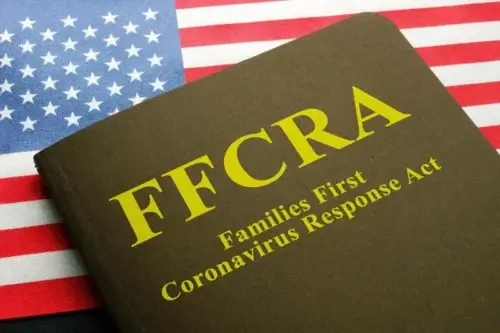
Now that we’re coming up on the end of the year, many employers may be wondering about filing for the FFCRA tax credit. They may have employees who took the time off to care for children or family members during the COVID-19 pandemic. This act, signed into law in March 2020, made it financially possible for employers to give their employees the time off, without suffering a financial loss.
FFCRA Leave Requirements
The FFCRA has two major provisions: the Emergency Paid Sick Leave Act (EPSLA) and the Emergency Family and Medical Leave Expansion Act (EFMLEA).
Under the EPSLA, employers with fewer than 500 employees and certain public employers must pay sick leave of up to 80 hours (about 2 weeks) to employees who are unable to work or telework:
- Subject to a federal, state or local quarantine or isolation order related to COVID-19.
- Advised by a health care provider to self-quarantine due to concerns related to COVID-19.
- Experiencing symptoms of COVID-19 and seeking a medical diagnosis.
- Caring for an individual subject to a quarantine or isolation order by the government or a health care provider.
- Caring for a child whose school or place of care is closed or whose childcare provider is unavailable because of COVID-19.
- Experiencing any other substantially similar condition specified by the secretary of health and human services in consultation with the secretary of the treasury and the secretary of labor.
An additional 10 weeks of family leave at two-thirds of regular wages is available under the EFMLEA to care for a child whose school or place of care is closed or whose childcare provider is unavailable because of COVID-19.
Documentation
The Department of Labor (DOL) initially required that employees submit documentation to their employer prior to taking FFCRA leave. Recently the DOL clarified that the documentation in support of FFCRA leave does not need to be provided prior to taking leave under FFCRA, but rather should be provided “as soon as practicable.” The DOL noted that, in most cases, employees should provide notice “as soon as practicable.” Employers should be careful not to require supporting documentation as a precondition to providing FFCRA leave and should provide employees a reasonable opportunity to provide the required documentation.
The documentation must indicate the following:
- The employee’s name.
- The dates for which the leave is requested.
- The qualifying reason for the leave.
- An oral or written statement that the employee is unable to work.
Tax Credits
The FFCRA provides businesses with tax credits to cover certain costs of providing employees with required paid sick leave and expanded family and medical leave for reasons related to COVID-19, from April 1, 2020, through December 31, 2020.
The tax credit is generally equal to 100 percent of the qualified wages an employer must pay under the FFCRA for emergency paid sick leave and expanded FMLA increased by the employer’s share of Medicare owed on the wages, as well as any qualified health plan expenses.
Eligible employers can claim the FFCRA credits on their federal employment tax returns (e.g., Form 941, Employer’s Quarterly Federal Tax Return), but they can benefit more quickly from the credits by reducing their federal employment tax deposits. If there are insufficient federal employment taxes to cover the amount of the credits, an employer can request an advance payment of the credits from the IRS by submitting a Form 7200, Advance Payment of Employer Credits Due to COVID-19 before the end of the month following the calendar quarter in which the qualified leave payments were made. The form may not be filed later than the date on which the employer files the Form 941 for the fourth quarter of 2020, which generally is due Jan. 31, 2021. If an eligible employer fails to claim a paid-leave tax credit on their Form 941 for the applicable quarter in which the leave wages are paid, the employer can submit a Form 941-X to reflect the corrections, including eligibility for the credit.
Interactions with other Tax Credits
- Eligible employers may receive tax credits available under the FFCRA for required paid leave, as well as the employee retention credit under the CARES Act, but not for the same wage payments. Similarly, employers can provide both qualified sick-leave wages and qualified family-leave wages and claim a tax credit for both, but not for the same hours.
- An employer may receive tax credits for paid leave under the FFCRA, as well as a Small Business Administration Paycheck Protection Program loan, but the qualified wages are not eligible as payroll costs for the purposes of loan forgiveness.
- Employers must include the full amount of the credits in gross income—qualified leave wages plus any allocable qualified health plan expenses and the employer’s share of the Medicare tax on the qualified leave wages. Employers may deduct the amount paid for emergency paid sick leave and expanded FMLA as an ordinary and necessary business expense in the taxable year paid or incurred, including wages for which they expect to take a tax credit.






